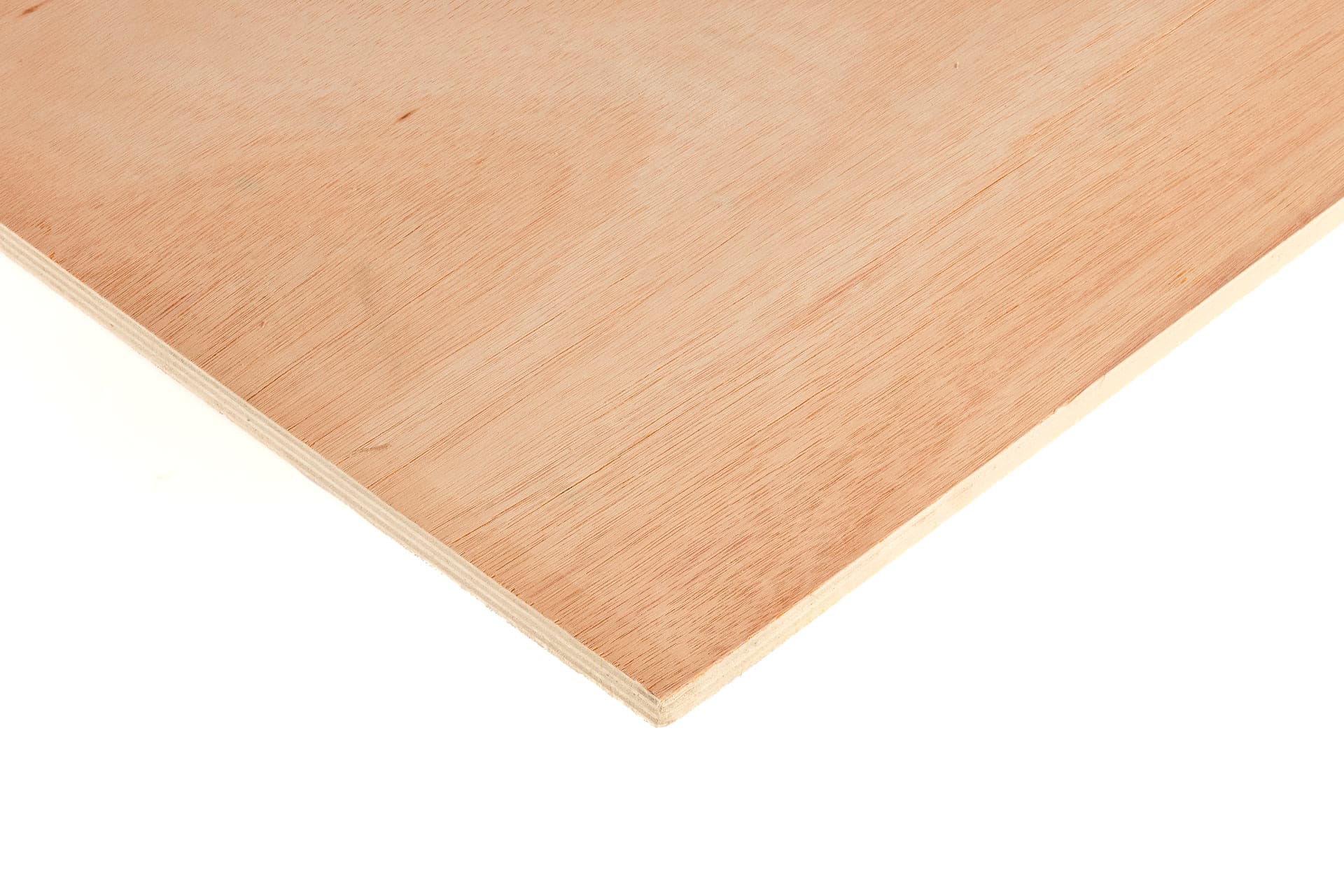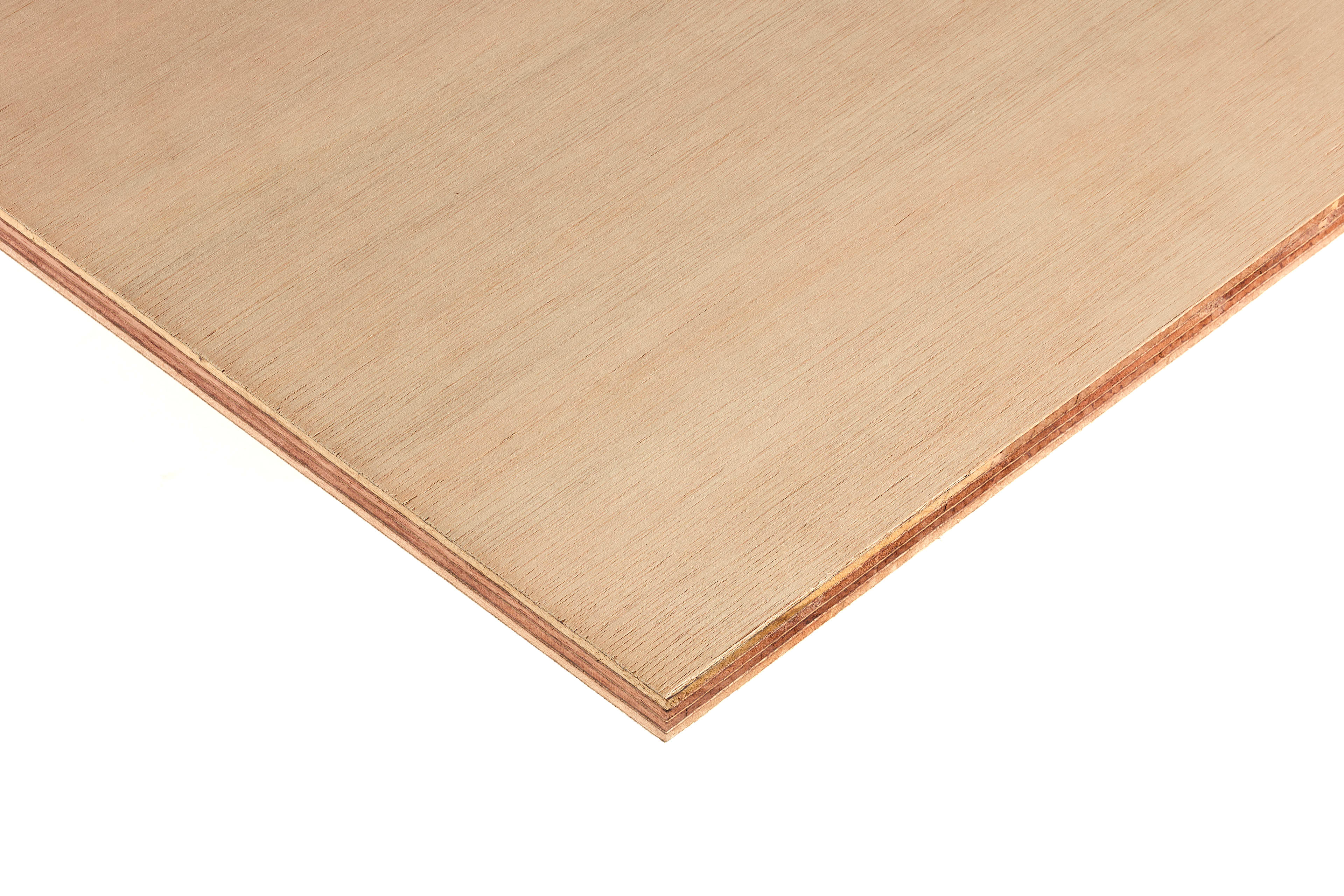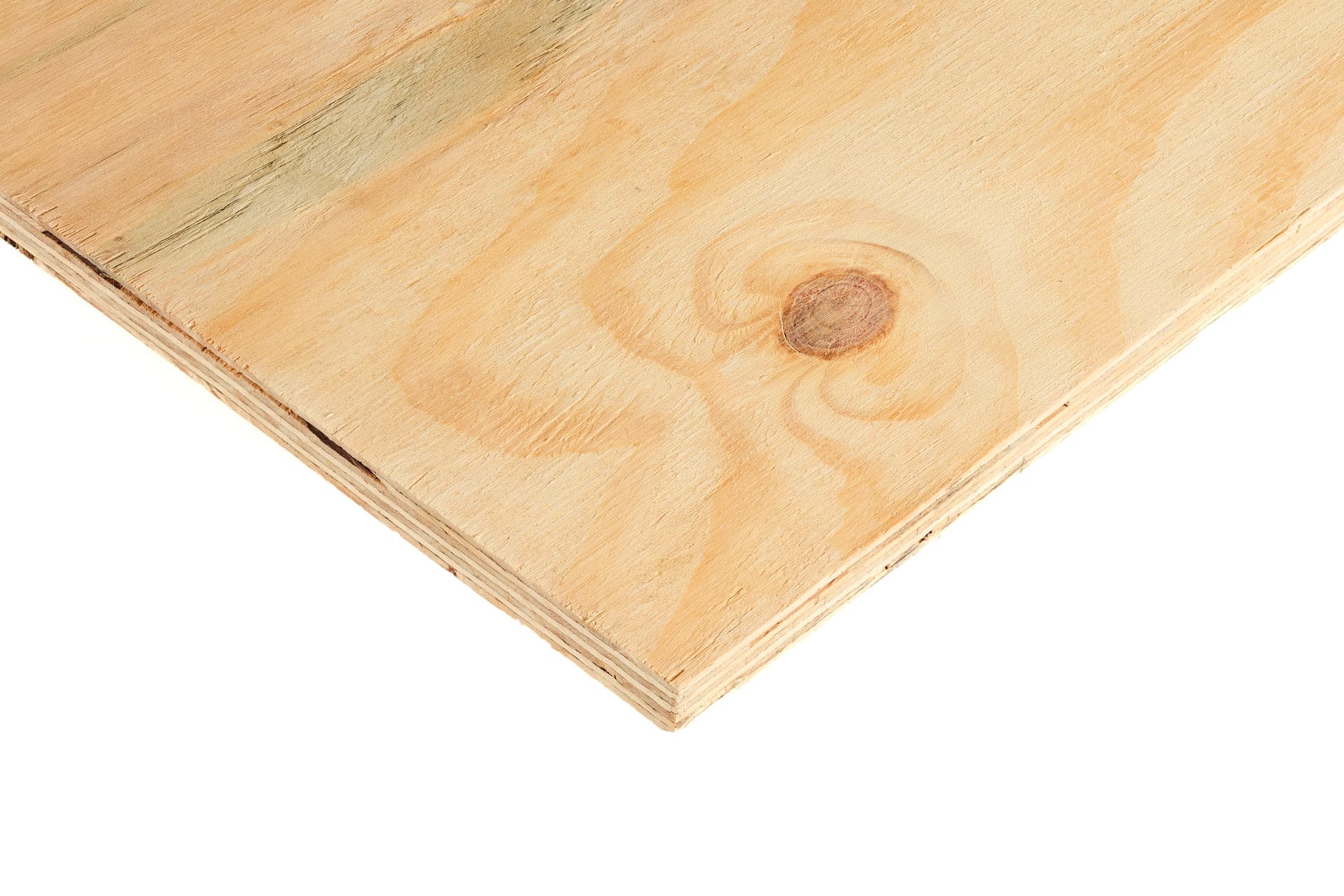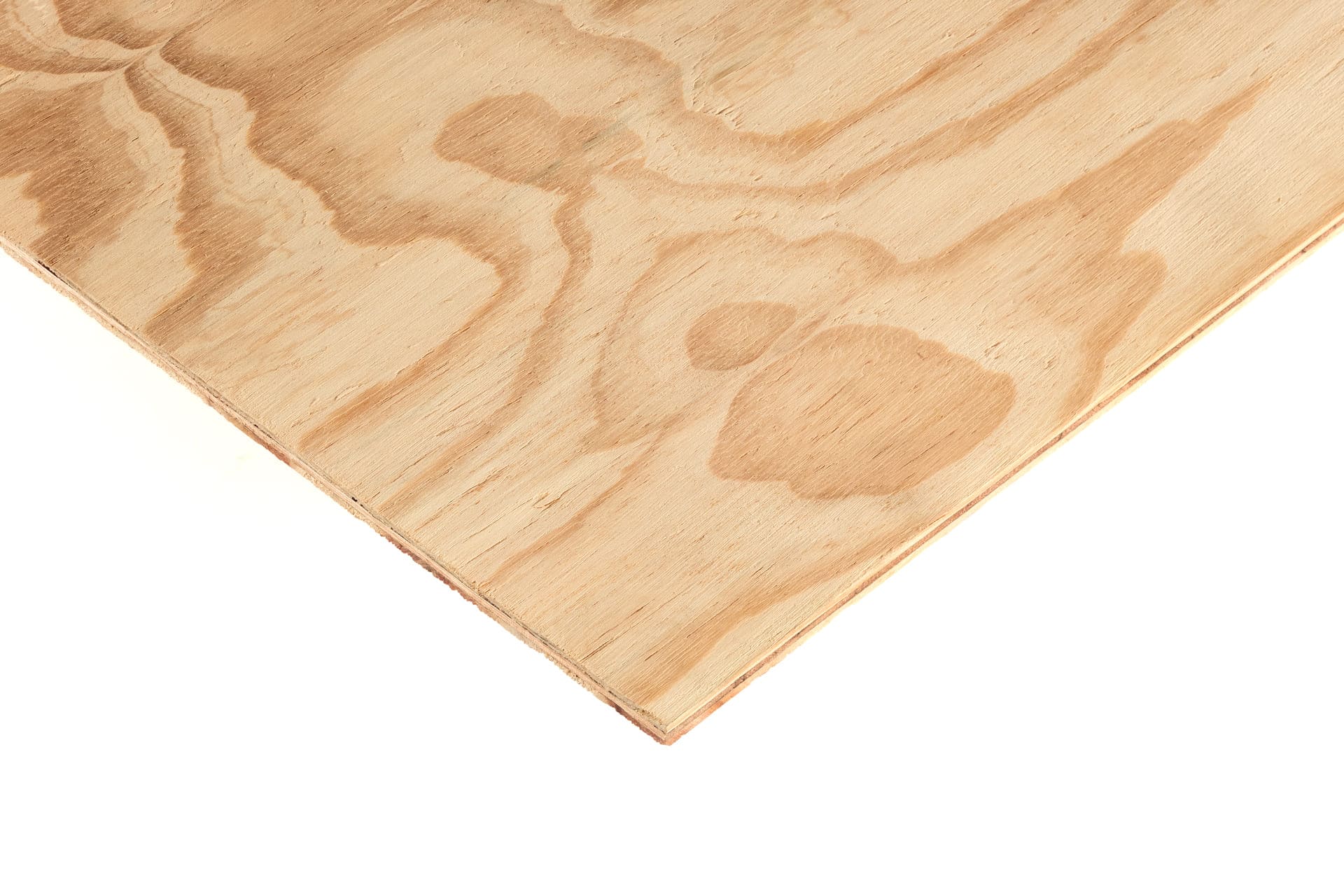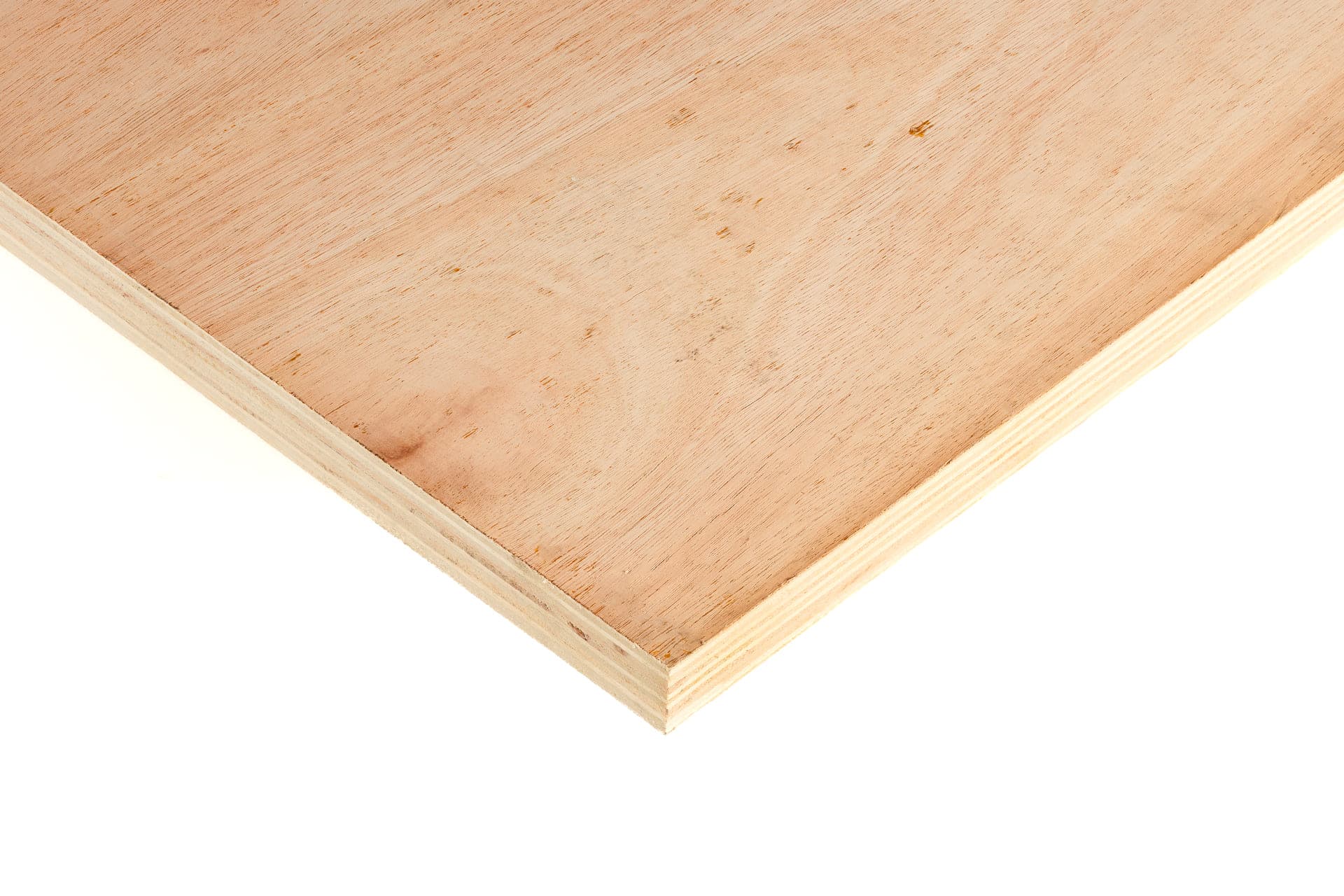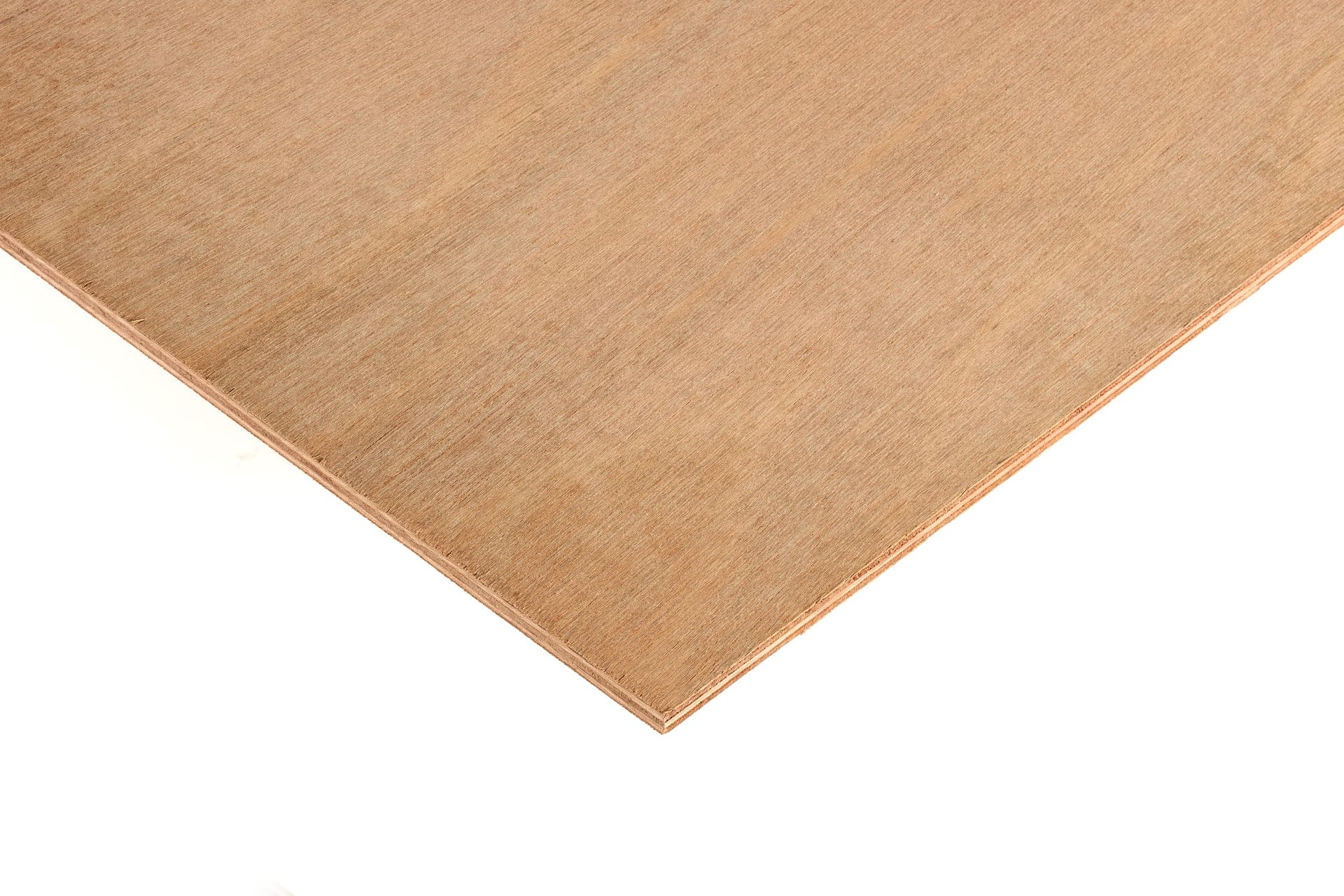Plywood Sheets
(54 Products)Plywood sheets are a strong, versatile engineered wood product made by bonding multiple thin layers of wood veneer together with durable adhesive. Commonly known as plyboard, this smooth, stable sheet material is widely used across both commercial and domestic construction projects for everything from structural applications to furniture and interior finishes. The industry-standard size of 8ft by 4ft (2440mm x 1220mm) is designed to align with typical stud, joist, and rafter spacing, minimising the need for cutting and making installation more efficient.
What Are Plywood Sheets?
Plywood is an engineered wood panel crafted from multiple thin "plies," or veneers, of wood bonded together under heat and pressure.
Its defining characteristic is a "cross-grained" structure, where each layer is oriented up to 90 degrees relative to the one beneath it. This process significantly enhances the panel's mechanical strength, improves dimensional stability, and minimises warping, shrinking, or splitting, particularly when fasteners are applied near the edges.
It is these properties which suit plywood to a wide range of structural and decorative applications. The strength derived from its cross-laminated layers enables it to bear significant loads while resisting deformation over time, making it ideal for subflooring, wall sheathing, and roofing systems.
For decorative uses, plywood offers a smooth, uniform surface that readily accepts veneers, laminates, or paint, opening up a wide range of aesthetic possibilities. It's a popular and versatile choice in cabinetry, furniture design, and interior wall panelling.
Applications
- Construction: Used as a foundational material in walls, floors, and roofs.
- Furniture: Commonly utilised in the crafting of desks, chairs, and cabinets.
- Decorative Panels: Provides a canvas for artistic and design elements.
- Packaging: Manufacture of crates, boxes, and other packaging materials.
- Flooring: Acts as subflooring, providing a base for the final floor covering.
- Marine Applications: Special marine-grade plywood is used in boat construction due to its resistance to moisture.
- Joinery and Cabinetry: An ideal choice for creating shelves, drawers, and other joinery elements.
Benefits
- Strength and Durability: Cross-grained construction imparts superior strength, resisting warping and shrinkage.
- Versatility: Applicable to a multitude of projects across industries.
- Cost-Efficient: Offers a durable solution at a fraction of the cost of solid wood.
- Sustainability: Often made from fast-growing, renewable tree species.
- Workability: Easy to cut, shape, and finish, accommodating both simple and intricate designs.
- Uniformity: Provides a consistent surface, free from knots and irregularities typical of solid wood.
- Layered Design: Allows for flexibility in thickness and strength, catering to diverse needs.
Plywood Grades
Plywood is graded into 4 primary groups:
- Class 1 – Strictly internal
- Class 2 – Interior grade of humid conditions but must be sealed
- Class 3 – Exterior grade but must be sealed
- BS10 88 – Marine plywood
Types of Plywood Sheets
Hardwood Plywood Sheets
From chair backs to bowling alley lanes, hardwood sheets do it all.
This strong, versatile plywood board is most commonly used in structural and exterior applications such as floors, decks and furniture, provided it is properly sealed.
Previously referred to as WBP plywood (WBP standing for Weather and Boil Proof), this terminology has now been superseded by the EN13986 and EN636 classifications.
The most popular thicknesses available are 9mm, 12mm and 18mm, all of which come in 8x4 sheets. All of our general-use hardwood plywood sheet materials (made from birch veneers) meet level 2 under these classifications.
Key Features
- Suitable for use in humid conditions, as well as sealed exterior applications
- Offers unrivalled strength and durability
- Sustainable - made from renewable and natural resources
- Aesthetic - real wood boasts infinite unique markings and patterns
- Resistant to warping and bending
- Suitable for use in roofing, flooring, interior walls and exterior wall sheathing
- Smooth surface perfect for staining and lacquering
- Cost-effective
Marine Plywood Sheets
As the 'marine' in its title would suggest, marine plywood is second to none when it comes to water resistance.
Offering a superior grade to standard hardwood plywood, it is manufactured using waterproof glue, making it suitable for external applications.
To give an idea of its water resistance, it is often used in the building of boats. It is safe to say that if it can withstand the sea, then a little rain in the UK isn’t likely to cause it any great trouble.
As well as being weather resistant, it is also stronger than hardwood plywood, offering excellent strength in any structural or load-bearing application, typically being used as a sturdy subfloor beneath heavy ceramic floor tiling.
Key Features
Let's check the specs and many benefits of using marine plywood:
- Common uses include: bathrooms, kitchens and special applications such as boatbuilding
- Pliable design - can bend without cracking
- Excellent impact resistance
- Smooth to the touch - no splintering
- Hard-wearing composition - holds up in wet and humid applications
Softwood Plywood
Softwood plywood is a versatile and cost-effective option, certified by FSC (Forest Stewardship Council) and made from softwood species like pine, spruce, and fir.
It serves as a reliable substitute for hardwood plywood, ideal for applications demanding strength, like walls and floors.
Its utility spans various construction projects, including site hoarding, shuttering, packaging, flooring, stud walling, and general joinery.
Key Features
- Provides an excellent, smooth front side that looks similar to natural wood grain
- Can be stained or painted
- Lighter than hardwood plywood and solid wood - easy to work with
- Inexpensive carpentry material - cost-effective alternative to hardwood plywood
- Excellent nail and screw holding properties due to its cross-grain layered structure
For further details on both materials, be sure to check out the 'Technical Downloads' (which can be found on every product page). Here you can find a manufacturer's datasheet and a wealth of facts and specifications.
Frequently Asked Plywood Sheets Questions
How Is Plywood Made?
Plywood is made from wood species such as spruce, pine and fir.
When manufacturing plywood, each individual adjacent layer is rotated from 45-90 degrees so the wood grain is going in different directions in each layer, which improves strength and prevents warping.
This is otherwise known as cross-graining, which means the growth lines are not adjacent to the long edge of the board. This adds to the strength of the finished product and explains its enduring popularity as a building product
Can Plywood Sheets Be Used Outside?
Our hardwood structural plywood can be used for exterior and interior applications, provided they are sealed correctly.
External plywood board is a versatile material, the layers have a negligible core gap which limits the amount that can get into the plywood.
It is moisture-resistant and water-resistant and is perfectly suited for structural tasks where occasional wetting may occur.
We also carry marine plywood on our site which is even better suited to outdoor use.
As is the case with all our materials, correct installation should be ensured in order for materials to work correctly.
Can You Paint Plyboard Sheets?
Painting plywood is possible with the right primer and paint. Consider your desired outcome before starting. For artistic projects, opt for acrylic primer and paints. For painting a plywood floor at home, choose heavy-duty acrylic latex or oil-based paint.
On the other hand, if it is only a small project, spray paint may suffice.
It may be worth choosing a roller if the area you intend to paint is a large one. Remember to ensure that the roller is one that is compatible with the type of paint and primer that you are using.
It is also important to sand the plyboard smooth before painting it and you can get coarse sandpaper of around 80-100 grit or use a sanding block or machine to do this.
After the sanding is complete, you may notice that there are some obvious holes in the plywood that need filling and this can be done using wood filler and a putty knife, before sanding it smooth once it has dried in.
Before priming and painting, remember to mask off any areas that you don’t want to paint, so that there are no problems later on.
What Are Plywood Sheet Sizes In The UK?
“How big is a sheet of plywood” is a common question we get asked, and it depends whether you mean plywood sheet thickness in mm or the dimensions in either metric or imperial.
The standard dimensions are 2440mm x 1220mm or 8” x 4” respectively whereas plywood sheet thickness can vary. We stock a range of 8x4 plywood sheets, as well as 8x2 plywood sheets.
Thin plywood sheets start at 5.5mm and large plywood sheets go all the way up to 25mm, depending on your requirements.
We have a wide variety of different thicknesses to suit the type of job you need to do.
It should be noted that Marine plywood, while thinner than our other plywood, actually has more density to it, so while the sheets can be thinner, they are actually more durable than a hardwood plywood sheet of the same thickness.
What Are the Main Differences Between Softwood and Hardwood?
Softwoods and hardwoods differ primarily in their source, physical structure, growth rate, and typical uses. Here’s a detailed breakdown of these differences:
- Source: Softwoods come from coniferous trees, which usually have needles and produce cones. Examples include pine, fir, and spruce. Hardwoods, on the other hand, derive from deciduous trees that have broad leaves, produce seeds, and shed leaves annually. Common hardwoods include oak, maple, and cherry.
- Cell Structure: The cell structure of hardwoods includes vessels, or pores, which are absent in softwoods. This structural difference affects the density and grain pattern of the wood, making hardwoods generally denser and harder than softwoods.
- Growth Rate: Softwood trees grow faster than hardwood trees, which contributes to softwood generally being less expensive due to quicker replenishment.
- Density and Hardness: Despite the names, some softwoods can be quite hard, but in general, hardwoods are denser, making them more suitable for furniture and flooring that require durability.
- Uses: Softwood is widely used in construction, including framing, siding, and roofing, because it is generally lighter and easier to work with. Hardwood is often preferred for furniture, flooring, and other applications where strength, appearance, and resistance to wear are important.
- Cost: Typically, hardwood is more expensive than softwood because it takes longer to grow and is often harder to work with due to its density.








